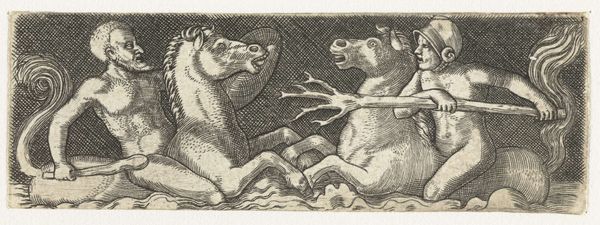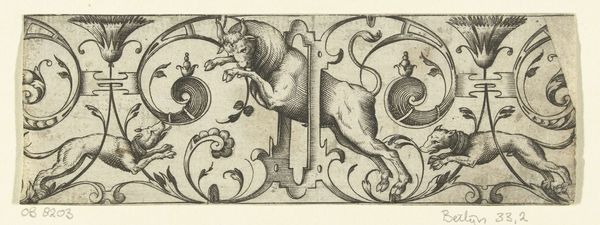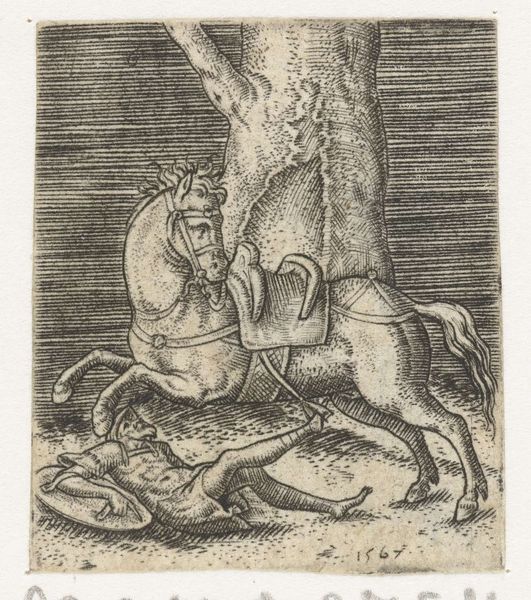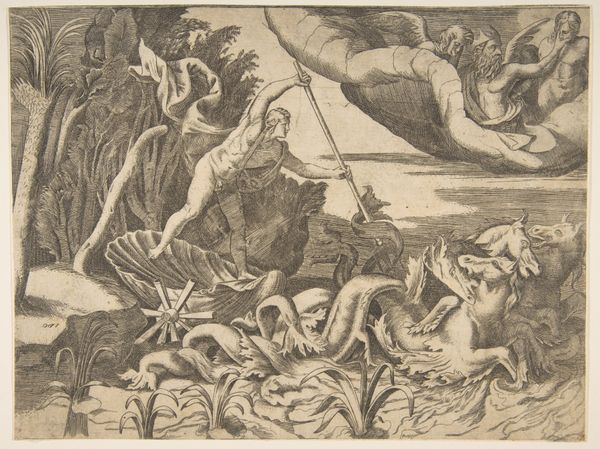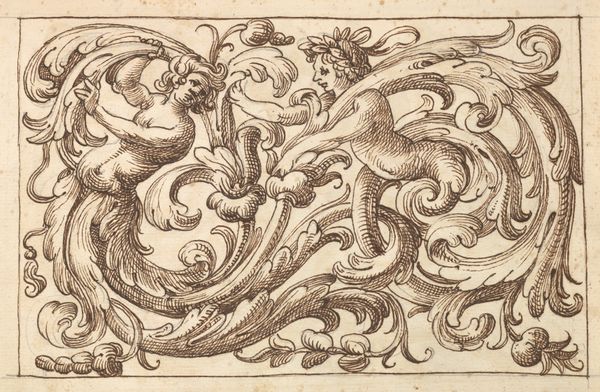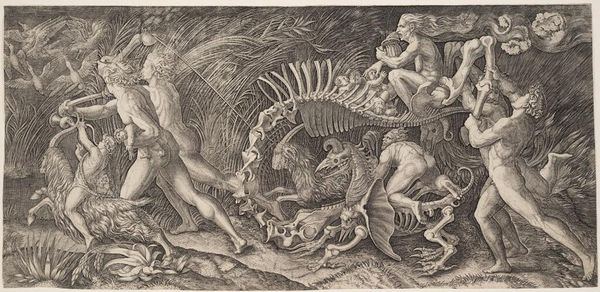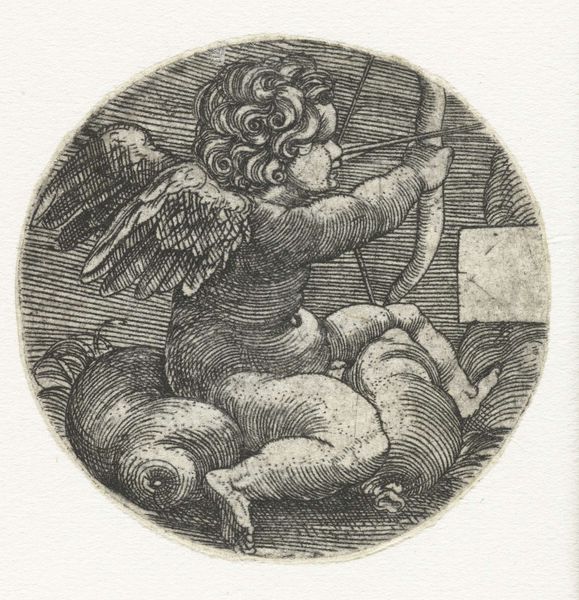
#
pencil drawn
#
amateur sketch
#
light pencil work
#
pen sketch
#
pencil sketch
#
incomplete sketchy
#
pencil drawing
#
pen-ink sketch
#
pencil work
#
pencil art
Dimensions: height 25 mm, width 79 mm
Copyright: Rijks Museum: Open Domain
Barthel Beham created this miniature etching, "Two Fighting Tritons," in sixteenth-century Germany. The print depicts two mythical sea gods, tritons, locked in combat. But what might such an image mean in its time? The Northern Renaissance saw the rediscovery of classical antiquity. Artists turned to ancient myths for inspiration, but they weren't simply copying the past. Beham's tritons, with their muscular bodies and fierce expressions, embody the dynamic energy and dramatic narratives that Renaissance artists admired. Prints like this were not just art objects; they were a form of visual communication. They circulated widely, carrying ideas and styles across geographical and social boundaries. Beham, as a printmaker in Nuremberg, was well-placed to participate in this cultural exchange. As historians, we can trace the circulation of these images through print collections, merchant networks, and artist workshops, uncovering the complex social life of art in the Renaissance.
Comments
No comments
Be the first to comment and join the conversation on the ultimate creative platform.
